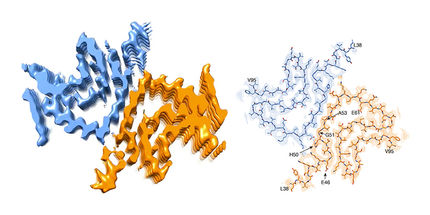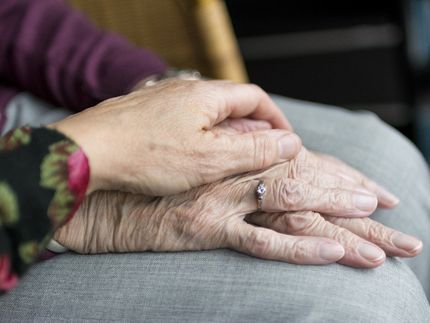Possible susceptibility genes found in neurodegenerative disorder
An international research team, co-led by scientists at Mayo Clinic's campus in Florida, have discovered three potential susceptibility genes for development of progressive supranuclear palsy (PSP), a rare neurodegenerative disease that causes symptoms similar to those of Parkinson's disease but is resistant to Parkinson's medications. Their report is published in Nature Genetics.
The findings provide a "testable translational hypothesis" as to the development and progression of PSP and may also provide clues into other more common brain disorders brought about by accumulation of tau protein in the brain, researchers say. Those "tauopathies" include some forms of Parkinson's disease, frontotemporal dementia, Alzheimer's disease, and other disorders.
"These are promising gene candidates that may help us understand and potentially treat PSP," says neuropathologist Dennis W. Dickson, M.D., a study co-lead author. "While these findings are surprisingly robust, we are still at the very earliest stages of this work. These are excellent candidate genes, but we have to make sure they are true susceptibility genes."
With 29 institutions represented from the United States and Europe, the study is one of the largest international collaborations to date researching PSP, Dr. Dickson says. It is also one of the largest reports on a pathologically confirmed neurological disorder.
Mayo Clinic's contribution was pivotal, he says. With its focus on movement disorders, Mayo Clinic in Florida is a national center for referral of patients with PSP for diagnosis, treatment, and research. It also has the world's largest collection of brain tissue from PSP patients. The 10-year-old Society for Progressive Supranuclear Palsy Brain Bank, established by Dr. Dickson, contains tissue samples from more than 800 patients with PSP. Medical institutions around the country routinely send autopsy tissues to the Mayo PSP brain bank.
Mayo Clinic contributed over 600 of the 1,114 PSP DNA samples used in the first half of the study; the other international institutions contributed the rest.
To search for susceptibility genes, the research team conducted a genome-wide association study (GWAS), which examines the differences between the genomes of patients with a certain disease compared to a control group of participants without the disease. This is done by looking at single nucleotide polymorphisms (SNPs, pronounced snips), which are DNA sequence variations that can occur in genes or in the non-coding regions between genes.
Researchers first assessed association between genotypes at 531,451 SNPs in the group of 1,114 PSP DNA samples, and in blood from a control group of 3,247 participants who did not have PSP. The SNPs "hits" they found were then tested in a second group: blood samples from 1,051 living PSP patients and blood from a second group of 3,560 control participants. For that phase of the study, Mayo Clinic in Florida contributed blood from about 200 PSP patients.
In addition to finding that PSP patients had variants in their tau gene, which was expected, the researchers also found the three SNPs that appear to be candidate PSP genes. All three have neurological functions. MOBP is a protein associated with myelin, an insulating material that forms a sheath around the axon of nerves. Glial cells form myelin, and these cells are affected in PSP. STX6 is a gene involved in recycling the membrane of a neuron, and membrane recycling has been implicated in a number of neurodegenerative diseases, including Alzheimer's, according to Dr. Dickson. The third gene, EIF2AK3, is involved in translating RNA to protein, and it signals cells to stop making proteins when abnormal proteins start to accumulate inside cells — as they do in neurons when tau errantly builds up.
Variants in these three genes were also found in the two control populations, but were significantly higher in the PSP patients (both brain samples and PSP blood samples). That suggests these genes do not cause PSP, but contribute to a person's susceptibility to the disease, he says.
"We don't know for sure that these SNPs are precisely at these gene locations," says Dr. Dickson. "If they are real PSP susceptibility genes, we can then zero in on variants that have an impact on the disease, which might then be exploited therapeutically.
"While we are a long way from any new treatment, this new research is exciting for researchers who are dedicated to understanding this tragic disorder."






















































